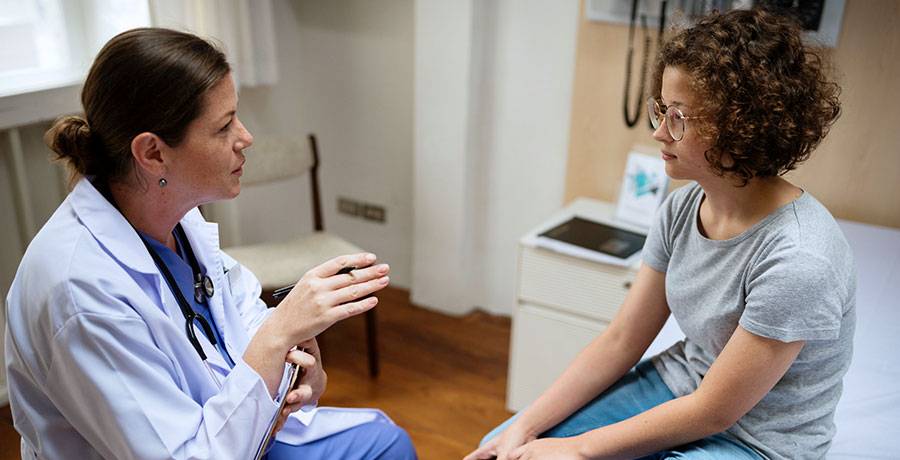It’s critical to act quickly to obtain appropriate medical care while seeking treatment for illnesses or injuries. It can occasionally be confusing because there are so many alternatives available.
Should you go to an urgent care facility or the emergency room or should you choose virtual care instead?
Each option has its benefits and considerations. This article aims to help you make an informed decision by exploring the key factors to consider when making the right choice.

Understanding Your Needs
Emergency Room for Life-Threatening Situations
Consider the severity of your ailment to determine where to go for treatment. It would be better to head to the ER if there were any life-threatening circumstances, such as trouble breathing, chest pain, or serious injuries.
Life-threatening situations call for prompt attention. The ER is staffed by experts and has the medical technology and resources to manage urgent circumstances. It has the manpower, both generalists and specialists, to offer 24-hour service.
Physicians, nurses, and other health practitioners with experience and training in critical situations work in the ER. It has laboratories, CT scanners, X-ray machines, and other diagnostic equipment for quick, accurate evaluations to stabilize a patient’s condition.
The ER also has access to specialized departments like trauma units and intensive care units (ICU), which provide prompt and intensive medical interventions. Patients can expect timely evaluation, stabilization, and necessary interventions.
Healthcare providers give priority to patients based on the severity of their condition to ensure that those with critical emergencies receive prompt attention. The ER staff’s readiness and know-how can effectively manage any unexpected complications.
It should be emphasized that the ER should exclusively handle true emergency cases. If your condition is non-life-threatening, seek care in an urgent care facility or through virtual care options.
Urgent Care for Non-Life-Threatening Conditions
Urgent care centers are equipped with medical professionals who can handle non-life-threatening conditions, including minor injuries, common illnesses like colds and flu, infections, minor fractures, sprains, and more.
Typically, urgent care centers operate outside regular office hours, making them convenient for seeking care when your primary care physician is unavailable. One of their primary benefits compared to ERs is their shorter wait times.
While ERs prioritize life-threatening cases, urgent care centers offer quicker access to care for minor ailments. However, note that urgent care centers may not have the same level of resources or capabilities as ERs, so they aren’t suitable for severe or potentially life-threatening conditions.
Choosing an urgent care center has financial advantages. ER visits are more expensive due to the higher level of care provided and the associated overhead costs. Urgent care centers have affordable fees and co-pays, making them a cost-effective option for non-life-threatening conditions.
When deciding between urgent care and virtual care, consider the nature of your condition. Urgent care centers provide in-person consultations and diagnostic tests. If you require a physical examination or on-site testing, an urgent care facility is better than virtual care.

Exploring Virtual Care Options
Traditional brick-and-mortar healthcare facilities are no longer the only choice, as virtual care options have gained popularity. It’s vital to explore virtual care options when considering the right site of care for your medical needs.
While virtual care options provide convenience and accessibility, you need to know their limitations. Certain medical conditions may still require laboratory tests, in-person consultations, or physical examinations. Know when virtual care is appropriate and when an in-person visit is necessary.
Telemedicine Consultations
When considering virtual care options, several factors come into play.
- Nature of the medical condition.
Telemedicine consultations are highly convenient for non-emergency healthcare needs such as minor illnesses, medication refills, chronic disease management, mental health counseling, and follow-up appointments.
On the other hand, In-person care may be better for more complex or urgent medical conditions that need physical examinations or procedures.
- Reliability and security of the telemedicine platform.
Ensure that the platform complies with privacy regulations and safeguards patient data. It utilizes encryption and secures communication channels to protect sensitive data. Also, the healthcare providers are licensed and experienced in their respective fields.
- Accessibility
Check whether the service is available in your area and whether your insurance covers it. Many providers now offer telemedicine as part of their coverage, but it’s essential to confirm beforehand to avoid unexpected expenses.
- Convenience
Virtual care eliminates travel and reduces waiting times, making it an attractive option for busy individuals or those with mobility limitations. It has flexible scheduling offered by the platform, but it should also align with your availability.
Some services may offer 24/7 access to healthcare professionals, which allows people to seek medical advice at any time.
- Quality of care
Consider the overall patient experience and the quality of care provided. Read reviews or seek recommendations from trusted sources to gauge the satisfaction levels of previous users. Look for telemedicine platforms that have a robust network of qualified healthcare providers.
Remote Monitoring
Remote monitoring, an option that’s gaining traction, involves the use of connected devices, such as wearable sensors or smart home technologies, to track vital signs, medication adherence, and other health-related data.
Remote monitoring allows healthcare providers to monitor patients’ health conditions from a distance, enabling timely interventions and the proactive management of chronic diseases.
When selecting a remote monitoring solution, ensure that it integrates seamlessly with your existing healthcare team and provides clear instructions on device usage and data sharing.

Follow-Up Care
Many medical conditions require ongoing monitoring and management after the initial diagnosis or treatment. Virtual follow-up care offers an alternative to in-person visits, particularly for routine check-ups, medication adjustments, or post-surgical recovery.
Inquire about the availability of video consultations, secure messaging platforms, and electronic health record integration. Additionally, assess the level of communication and coordination between your virtual care provider and your primary care physician or specialist.
What about Emergency Plans for Children?
Children have unique medical needs that differ from those of adults. Below are the factors to consider when selecting the right site of care for children during emergencies.
1. Availability of Pediatric Facilities
Pediatric hospitals or emergency departments equipped with child-friendly environments and staff trained in pediatric care provide the best results for children in emergencies. These facilities are designed to accommodate children’s physical and emotional needs.
Pediatric facilities provide a comfortable and reassuring experience for both the child and their parents.
2. Proximity to a Pediatric Hospital
The accessibility of a pediatric trauma hospital or center is important. Pediatric trauma centers have the resources and expertise to handle severe injuries and life-threatening emergencies specific to children.
Being within a reasonable distance of this facility can impact a child’s chances of survival and recovery.
3. Availability of Pediatric Medical Equipment
Children often require equipment and medication dosages tailored to their age and size. Emergency care sites that have pediatric-specific medical devices, such as child-sized airway equipment or specialized medications, can deliver more accurate and effective treatment.
4. Availability of a Pediatric Transport System
Access to medical transport services specializing in pediatric care is critical. Instances may arise where children need to be transferred to a specialized facility for further evaluation or treatment.
Having a well-established pediatric transport system ensures the safe and efficient transfer of children. Healthcare professionals are trained to address their unique medical needs during transportation.
5. Collaboration among Healthcare Providers
An ideal site of care should have a network of professionals who can work together to provide integrated care for the child. This may include nurses, emergency medical technicians, pediatricians, and other specialists in pediatric emergency medicine.
How to Prepare for Medical Emergencies
Medical emergencies can occur unexpectedly; hence, you need to be prepared to handle such situations promptly. Taking proactive steps makes a significant difference in the outcome of an emergency. Here are some recommended steps to prepare for medical emergencies:
Learn basic first aid.
Enroll in a certified first aid and CPR course to gain essential skills. Understanding how to administer CPR, control bleeding, and treat common injuries can be life-saving.
Assemble a first-aid kit.
Create a well-stocked first aid kit that includes essentials such as adhesive bandages, gauze pads, antiseptic wipes, pain relievers, scissors, and tweezers. Keep it easily accessible at home, and consider having a portable kit for travel.
Keep emergency numbers handy.
Save emergency contact numbers, including local emergency services and poison control, in your phone and near your landline. Inform all family members where this information is located.
Create a medical information document:
Compile important medical information for each family member, including allergies, current medications, and existing health conditions. Store this document digitally, and keep a printed copy in an easily accessible location.
Establish a communication plan.
Develop a plan with family members or roommates on how to communicate during emergencies. Share contact information and decide on a meeting place if necessary.
Install smoke detectors and fire extinguishers.
Preventive measures such as smoke detectors and fire extinguishers can help mitigate fire-related emergencies. Ensure that they are regularly maintained and that everyone knows how to use them.
Prepare an emergency evacuation plan.
Plan escape routes from your home in case of fire or natural disasters. Practice the evacuation plan with your family regularly to ensure everyone understands the procedures.
Maintain a list of nearby medical facilities.
Identify and note down the locations of the nearest hospitals, urgent care centers, and clinics. Include their addresses, phone numbers, and directions.

Choose the Right Type of Care for Your Child
Choosing the right type of medical care is paramount in different situations. Emergency room treatment is the ideal option for life-threatening emergencies, whereas urgent care centers cater to less severe ailments that demand urgent medical attention.
Virtual care includes remote monitoring and telemedicine consultations. This provides a convenient alternative for minor ailments or follow-up care. You can make an informed decision and receive timely, appropriate medical care by understanding your needs and considering these factors.
Omega Pediatrics office in Roswell, Georgia, can provide urgent medical care as well as telemedicine. Choosing Omega Pediatrics for your child’s healthcare gives assurance that your child will receive top-notch pediatric services.
Remember, if you are uncertain about the urgency or seriousness of your situation, it is wise to be cautious and seek medical attention as soon as possible.



